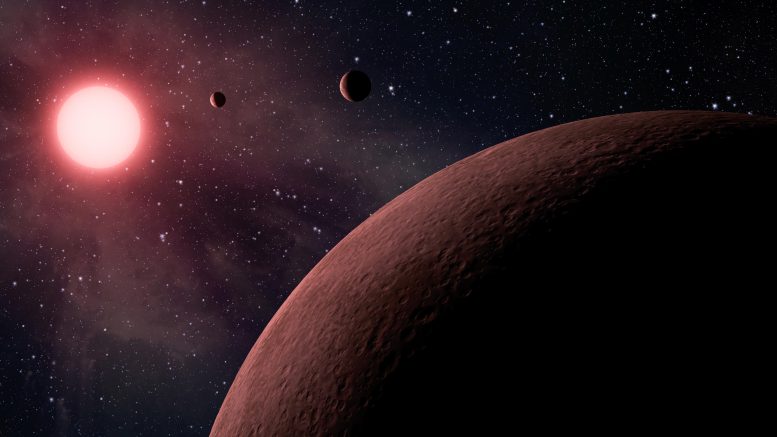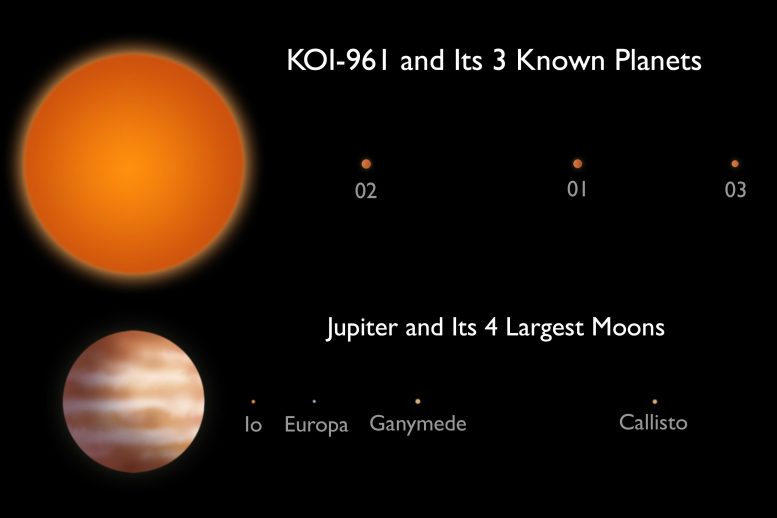
NASA’s Kepler spacecraft has discovered the three smallest exoplanets ever detected. All of them are smaller than Earth, and the smallest is no larger than Mars. These newly discovered exoplanets actually form a miniature planetary system, which orbits a cool, dim red dwarf star called KOI-961.
The three planets orbit their star too closely for them to support carbon-based life, but unlike other exoplanets, most of which are Jupiter-scale gas giants, all three are rocky worlds like Earth and other worlds of the inner Solar System. Red dwarf stars are the most common type of stars in the Milky Way, which could imply that the galaxy might be teeming with rocky exoplanets. Some of these might reside in the habitable region around their stars, where temperatures could be right for water to remain liquid, thus supporting life as we know it.

Astronomer Sara Seager states that they need to find a census of how many rocky exoplanets are out there to understand how Earth was formed and how common life may be in the Milky Way. The suggestion is that these rocky planets are common and diverse, although they have yet to find proof of this.
The Kepler findings were presented on the 11th of January, at the semi-annual meeting of the American Astronomical Society in Austin Texas, by John Johnson and Philip Muirhead of the California Institute of Technology in Pasadena. Their paper has been accepted by the Astrophysical Journal.

A paper describing the discovery has been accepted by the Astrophysical Journal. Named KOI-961, for Keppler Object of Interest, the red dwarf in question has come under close scrutiny by astronomers. It’s one-sixth the size of Sol. Last December, Johnson received an email from Kevin Apps, an amateur astronomer from Horley, England, and co-author of the paper. He spends his spare time studying data on extrasolar planets and nearby stars and alerted the team that KOI-961 bore an uncanny resemblance in color and temperature to Barnard’s Star. The team followed up with ground-based telescopes and confirmed that the stars were almost virtual twins.
Since Barnard’s Star is only 6 light years from Earth, Johnson’s team was able to gauge the diameter of KOI-961 and find its transiting planets. All three planets whip around the star in less than two days.
Never miss a breakthrough: Join the SciTechDaily newsletter.